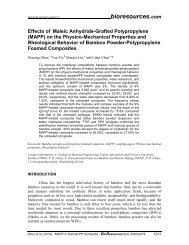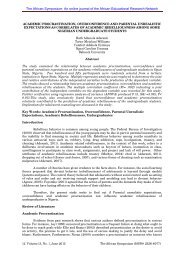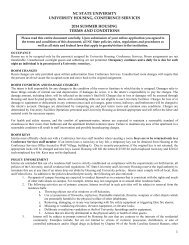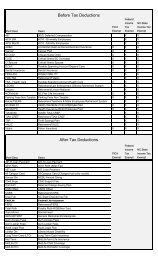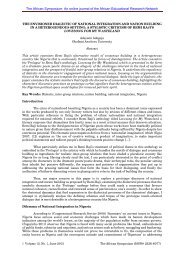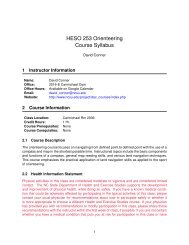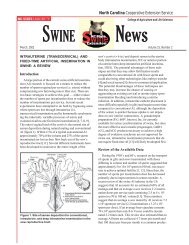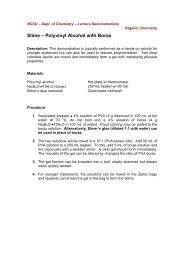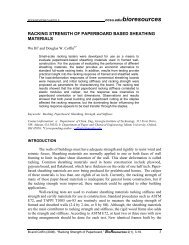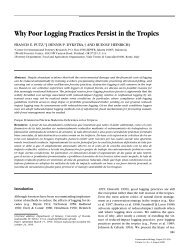Windows QTL Cartographer 2.5 - FTP Directory Listing
Windows QTL Cartographer 2.5 - FTP Directory Listing
Windows QTL Cartographer 2.5 - FTP Directory Listing
Create successful ePaper yourself
Turn your PDF publications into a flip-book with our unique Google optimized e-Paper software.
6. Select one or all chromosomes to include in the analysis.<br />
© 2010 N.C. State University, Bioinformatics Research Center<br />
Win<strong>QTL</strong>Cart Procedures 63<br />
7. Select one or all traits to include in the analysis. The Traits you select may change the value of<br />
the Threshold controls on the right side of the form.<br />
8. Set the threshold level via either manual input or permutations. For more information, see Setting<br />
threshold levels (IM & CIM) 56<br />
.<br />
9. Click Start to begin <strong>QTL</strong> mapping analysis. Win<strong>QTL</strong>Cart will open a Save As dialog for you to<br />
save the result file that will be created.<br />
10. If you selected Set control markers manually in step 4b, then Win<strong>QTL</strong>Cart will display the<br />
Select CIM Control Markers dialog box. Enter or edit the marker numbers you want to using the<br />
text box; separate each number with a space. Click on the marker row's cells to toggle their<br />
display in the text box.<br />
When the analysis is complete<br />
Win<strong>QTL</strong>Cart will<br />
Create a <strong>QTL</strong> mapping result file (*.QRT) and open it in the Graph window<br />
Create a <strong>QTL</strong> summary information file using the E<strong>QTL</strong> function.<br />
Display a confirmation box asking if you want to display <strong>QTL</strong> summary information in the Main<br />
window's Data pane.<br />
Multiple Interval Mapping<br />
What it is<br />
Multiple interval mapping (MIM) uses multiple marker intervals simultaneously to fit multiple putative <strong>QTL</strong><br />
directly in the model for mapping <strong>QTL</strong>. The MIM model is based on Cockerham's model for interpreting<br />
genetic parameters and the method of maximum likelihood for estimating genetic parameters. MIM is<br />
well suited to the identification and estimation of genetic architecture parameters, including the number,<br />
genomic positions, effects and interactions of significant <strong>QTL</strong> and their contribution to the genetic<br />
variance.<br />
High-level process<br />
Here's a quick overview of how to use Win<strong>QTL</strong>Cart's MIM implementation:<br />
About the MIM form<br />
1. Select the MIM analysis method.<br />
2. Pick a trait you want to work with. (MIM works with only one trait at a time.)<br />
3. Decide if you want to create a model using Win<strong>QTL</strong>Cart's default search procedures or an<br />
alternative (such as Forward, Backward, or CIM).<br />
4. Run the analysis to generate the model.<br />
5. Refine the model as needed by editing individual cells in the model, adding or deleting <strong>QTL</strong>,<br />
searching and testing <strong>QTL</strong>s or epistatics, and re-estimating. This part of the analysis can<br />
iterate for as long as you want to search for <strong>QTL</strong>s.<br />
6. Save the model as a .MDS file (or as a result file using the Refine Model function).<br />
From the Source Data form, open a source data file and select Multiple Interval Mapping as the analysis<br />
method. If there is more than one trait in the dataset, the Select Trait for MIM Analysis dialog appears.<br />
Select a trait from the drop down list and Click MIM... button to open MIM form.



